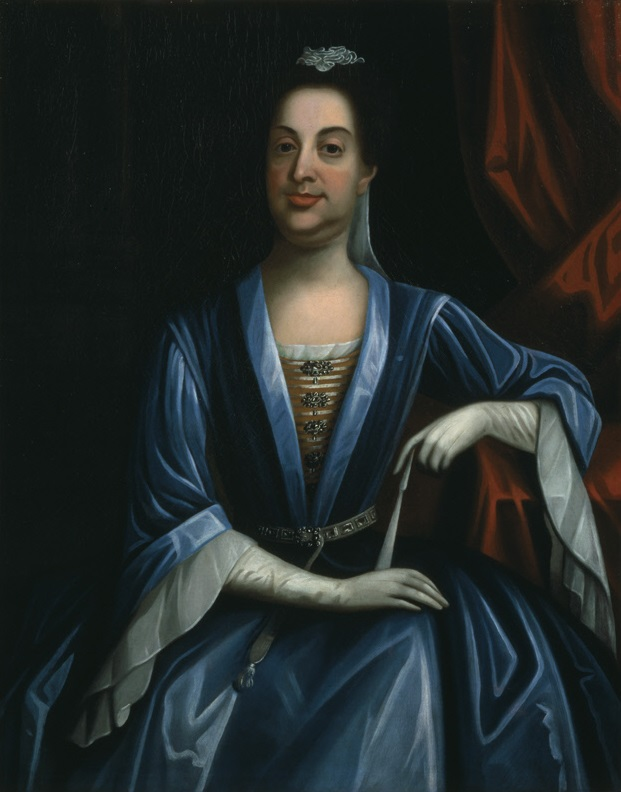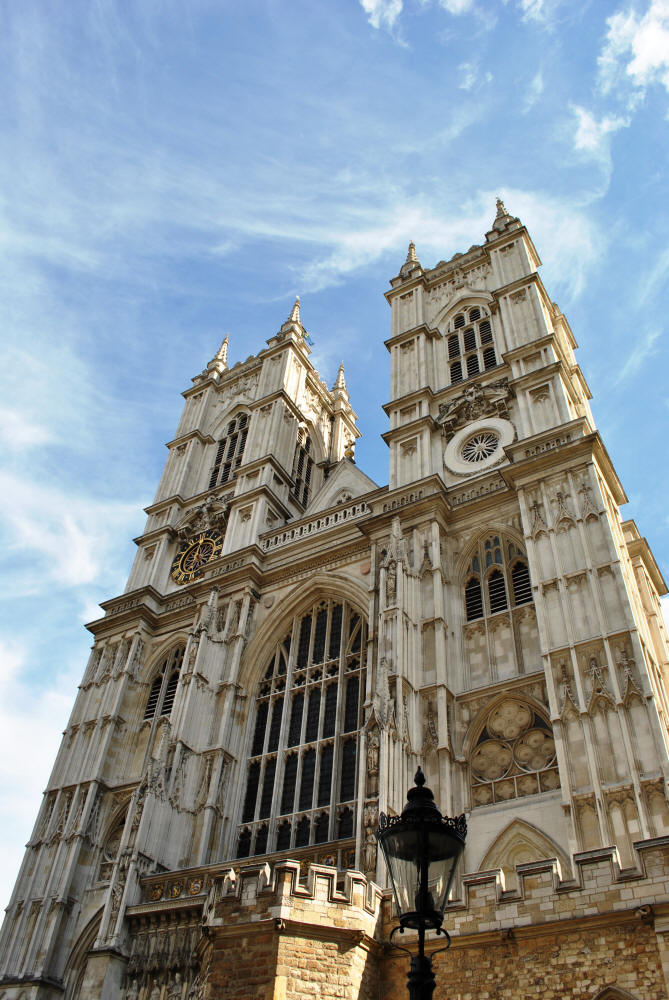
Queer Places:
Swallowfield Park, Wokingham, Swallowfield, Reading RG7 1TG, Regno Unito
University of Oxford, Oxford, Oxfordshire OX1 3PA
 Edward Hyde, 3rd Earl of Clarendon (28 November 1661 – 31 March 1723),
styled Viscount Cornbury between 1674 and 1709, was propelled into the
forefront of English politics when he and part of his army defected from the
Catholic King James II to support the newly arrived Protestant contender,
William III of Orange. His actions triggered the Glorious Revolution of 1688 ,
a bloodless change of governments. As a reward, he was later appointed
Governor of New York and New Jersey between 1701 and 1708.
Edward Hyde, 3rd Earl of Clarendon (28 November 1661 – 31 March 1723),
styled Viscount Cornbury between 1674 and 1709, was propelled into the
forefront of English politics when he and part of his army defected from the
Catholic King James II to support the newly arrived Protestant contender,
William III of Orange. His actions triggered the Glorious Revolution of 1688 ,
a bloodless change of governments. As a reward, he was later appointed
Governor of New York and New Jersey between 1701 and 1708.
The new governor’s primary mission was to protect the colonies during the
War of the Spanish Succession (known in the Americas as Queen Anne's War, or
the 2nd French and Indian War; 1701 – 1714). His administration successfully
prevented French incursions into the middle colonies. However, he soon became
mired in the region’s many factional conflicts.
By 1708, war weariness led to a shift in the political tide in Great
Britain. Governor Cornbury was recalled from the colonies, but was soon after
installed as a member of Queen Anne’s privy council . Lord Cornbury’s fortunes
changed again when George I was crowned King of Great Britain on 1 August
1714. Out of favor, Lord Cornbury died in Chelsea, London on 31 March 1723.
“A degenerate and pervert who is said to have spent half of his time
dressed in women's clothes.”[75]
Virtually every reference written about Lord Cornbury has described him in
disparaging terms. The criticisms can be traced back to a spring 1706
complaint written to the newly appointed Whig ministry by Lewis Morris
(1671-1746), and Samuel Jennings (about 1660-1708) in behalf of the New Jersey
Assembly.[76]
In 1708, the New York Assembly followed suit with their own letter.[77]
Such complaints were commonplace during that era. Similar allegations were
made about the royal governors who preceded and succeeded Cornbury -- both in
New York & New Jersey, and in the other colonies.[78]
What was unique about Governor Cornbury was the allegation of wearing women's
clothes.
A generation later, the story was told of a conversation about Lord
Cornbury between the famous Whig minister & author Horace Walpole (1717-1797)[79]
and author George James Williams (1719-1805) :
Walpole: "[Lord Cornbury] was a clever man. His great insanity was
dressing himself as a woman. When Governor in America he opened the Assembly
dressed in that fashion. When some of those about him remonstrated, his reply
was, 'You are very stupid not to see the propriety of it. In this place and
particularly on this occasion I represent a woman (Queen Anne) and ought in
all respects to represent her as faithfully as I can.'"
Williams: "My father did business with Cornbury in woman's clothes. He
used to sit at the open window so dressed, to the great amusement of the
neighbors. He employed always the most fashionable milliner, shoemaker, stay
maker, etc. I saw a picture of him at Sir Herbert Packington's in
Worcestershire, in a gown, stays, tucker, long ruffles, and cap...."
[80]
However Columbia University denies having ties to the former governor: “Edward
Hyde, Viscount Cornbury (1661-1723), could very well have been known as the
pre-founder of King's College. He was an advocate for the placement of a
college in New York City, but somehow his suggestions were overshadowed by
Colonel Lewis Morris' statements on the matter, as Morris is more famously
known as the college's pre-founder. Although documents lead to evidence of
Cornbury's support of the college, his involvement with the college's founding
has been ignored because of his damaged reputation over the years.”[81][82]
Professor Patricia U. Bonomi (New York University) tried to rehabilitate
the governor by concluding that he was not transgender: “That a royal
governor could have publicly displayed himself in women’s clothes, as Cornbury
is alleged to have done, and escaped severe censure seems doubtful.”[83]
As the 18th century unfolded, Britain experienced the rise of moral reform
societies determined to purge “sodomy” & “transvestism” from society.[84]
Cornbury’s reputation suffered as these groups gained increasing influence in
British society.
A critical piece of evidence was an 18th-century portrait hanging in the
New York Historical Society. The portrait was uncaptioned, but the subject has
been commonly believed to be Governor Cornbury wearing a dress. Professor
Bonomi suggested that the subject was not, in fact, Cornbury.[85]
However, other art historians have remained unconvinced.[86]
The Dallas Museum of Art has a different portrait of unknown provenance
also ascribed to be “Lord Cornbury in a Dress.”
[87]
Marriage: (10 July 1685) Eloped with Katherine O’Brien, the 8th Baroness
Clifton (22 January 1663 – 11 August 1706).[88]
She was the daughter of Henry O'Brien, Lord Ibrackan, 7th Earl of Thomond. She
died in New York City and was buried at Trinity Church, New York.

Westminster Abbey, London
Children:
Catherine Hyde (1689-1708) Died at age 9.
Mary Hyde (-1697)
Edward Hyde, Viscount Cornbury & 9th Baron Clifton (1691-February 1713),
Died unmarried at age 21 due to fever.
Theodisia Hyde, 10th Baroness Clifton (9 November 1695 – 30 July 1722)
Married August 1713 to John Bligh, the 1st Earl of Darnley (1687-1728). Died
of sepsis at age 26 shortly after the birth of her 6th child.
My published books:


BACK TO HOME PAGE

-
"Edward Hyde, 3rd Earl of Clarendon". The Peerage.
Retrieved 7 October 2017.
- Bonomi (1998) page 31
- Bonomi, (1998), page 32
- Here the word
“reformed” refers to a broad spectrum of protestant groups that tend to be
Bible-focused rather than tradition-focused, devoted to simplicity in
lifestyle & worship, and more authoritarian. The distinction here is
between Anglicanism and other Protestant sects – known in 17th century
England as “dissenters” or “”non-conformists.”
- The
Clarendon Code(enacted 1661-1665) was a series of laws that
re-established the
Church of England as the state religion, while excluding both
Catholicism & “nonconformist” (aka “dissenting”) Protestant religions
(i.e.
Presbyterianism,
Calvinism,
Puritanism,
Dutch Reformed, etc.) See also
http://www.britainexpress.com/History/stuart/clarendon-code.htm
- Bonomi (1998), page 33
- See Wiltshire County
section of The History of Parliament: the House of Commons 1660-1690, ed.
B.D. Henning, (1983) and 1690-1715, ed. D. Hayton, E. Cruickshanks, S.
Handley, 2002 (Found at
http://www.historyofparliamentonline.org/ ) These accounts detail the
political maneuvering that led to Cornbury’s election.
- Known as the “Bloody
Assizes”
- Bonomi (1998), page 38
- Later known as the “Immortal
Seven.”
- Entry Glorious
Revolution in the Titi Tudorancea Enclycopedia,
https://www.tititudorancea.net/z/glorious_revolution.htm See also
http://www.berkshirehistory.com/bios/hhyde_2eofc.html
- Bonomi (1998), pages
38-39; See also Stone (1892), pages 55-56.
- See University of
Nottingham’s map of Wiliam’s invasion route at:
https://www.nottingham.ac.uk/manuscriptsandspecialcollections/documents/elearning/conflict/williamoforangeitinerary-illustration5.pdf
- However, the war
continued in Ireland until the Battle of the Boyne on 1 July 1690.
- George, King of
Denmark, had married Cornbury’s cousin Anne, soon to be Queen of England.
The couple lived in London with little real political power until 1702.
- See Booth, Mary L
(1859), Chapters I-III
- Wilson (1892) pages
150-154
- Reynolds (1906), pages
63-65
- Booth (1859), pages
220-239
- The first elected
assembly in New York had met on 17 October 1683, under Governor Dongan.
Booth (1859), pages 207-208. During Leisler’s government, the New York
Assembly firmly established its authority. See Vermilye, Ashbel G (1892),
The Earl of Bellomont and Suppression of Piracy, 1698-1701 in The Memorial
History of the City of New York Volume II, ed James Wilson, New York
History Company pages 15-16.
- Booth (1859), pages
239-240
- Stone (1892), page
58-60
- Booth (1859) page 260
- Stone (1892), page 57
- Peter Kalm, (1749),
Travels into North America Vol 1 pages 253-258 and 243-245; reprinted in
Stevens, Guy (1909), Selections from the Economic History of the United
States, 1765-1860 Callender Ed, Boston: Ginn and Co. pages 16-20.
- Booth (1859) pages
254-256
- Reynolds (1906) page
163
- Vermilye (1892), page
33
- See entries on
Louis-Hector de Calliere by Yves F Zoltvany, and on Teganissorens by WJ
Eccles, Dictionary of Canadian Biography Volume II (1701-1740), University
of Toronto, accessed 23 June 2017.
- For example, on 8
February 1690, a
native attack eradicated the village of Corlaer (Now Schenectady, 19
miles northwest of Albany NY.) See also Beck, Sanderson (2016): New
England 1664-1744 & New York to Pennsylvania 1664-1744 in Ethics of
Civilization Vol 11, America to 1744, ISBN Q-9762210-7-1
- William Glidden,
The English Stone Fortress: Fort Frederick, Lake Champlain Weekly (17
September 2003) Quoted at:
http://dmna.ny.gov/forts/fortsE_L/frederickFort.htm
- See Reynolds (1906)
page 157 for the previous governor’s (Earl of Bellomont) report of the
conditions at Albany in 1700.
- Stone (1892) pages
60-61
- Cliff Lamere, Fort
Albany & Fort Frederick at Albany NY at:
http://www.genealogy.clifflamere.com/Aid/History/FortFrederick-Albany-working.htm
- Bonomi (1998), page 64
- Stone (1892), pages
65-66
- Known at the time as
the North River.
- Stone (1892), page 69;
Booth (1859), pages 276-278.
- The plan was to repair
and fortify blockhouses originally built by the Dutch – One on Signal Hill
on
Staten Island (built 1653, later known as
Flagstaff Fort [1776] and
Fort Tompkins [1806]). Another blockhouse stood in the village of
New Utrecht on the Brooklyn side (built 1657, later
Fort Hamilton [1826]). England was supposed to supply cannon, but they
never arrived. Bonomi (1998) page 83.
- Peartree had been
appointed mayor because of his former experience as a privateer. See Booth
(1859), page 281
- The Assembly’s
subsequent inquiry discovered that tax collectors only raised £398 of the
total. The money had been placed in the hands of the colonial receiver of
revenues. Bonomi (1998), pages 82-85. In spite of these findings,
historians have continued to cite the charge as proof of Cornbury’s
incompetence. Compare Stone (1892) page 70 with page 73. See also, Booth
(1859), pages 276-281.
- Stone (1892) page 73.
In England, the
Parliament House of Commons has the “power of the purse” – sole
control over taxation and funding of major undertakings. A “Charter of
Liberties” had been enacted by the New York Assembly in 1683 but they were
annulled by Queen Mary II in 1691 (Booth [1859] p 207-208, 240)
- Stone (1892) page 70
- Stone (1892) pages
70-71
- Stone 1892, page 65
- Other ministers had
warned Makemie about meeting the legal requirements, so the subject of
Makemie’s sermon was “We ought to obey God, rather than Men.” (Acts 5:29)
Wilson (1892) page 81
- Cornbury accused
Makemie of being a “Disturber of Governments”. See David Hall, Francis
Makemie and Freedom of Speech in The Aquila Report 25 January 2015; and
Wilson (1892) p 82.
- The decision has been
hailed as a landmark for American religious freedom. See Francis
Makemie, Presbyterian Pioneer, by Kirk Mariner.
http://francismakemiesociety.org/files/Download/Francis%20Makemie%20-%20Presbyterian%20Pioneer%20by%20Kirk%20Mariner.pdf
- Makemie's published
account of the event can be found in Rev. Francis Makemie: A Narrative
of a New and Unusual American Imprisonment of Two Presbyterian Ministers
And Prosecution of Mr. Francis Makemie in William Henry Foote (1850),
Foote's Sketches of Virginia (First Book) pages 65-84
http://www.roanetnhistory.org/foote-virginia.php?loc=Foote-Sketches-Virginia-First&pgid=92
- Bonomi 1998, page 70.
That same year, Governor Cornbury established the first free grammar
school in New York City. Booth, (1859) page 273-274
- Not the current King’s
College of New York, which was founded in 1938
- McCaughey, Robert
(2003). Stand, Columbia : A History of Columbia University in the City of
New York. New York, New York: Columbia University Press. p. 1.
ISBN 0-231-13008-2.
- Matthews, Brander;
John Pine; Harry Peck; Munroe Smith (1904). A History of Columbia
University: 1754–1904. London, England: Macmillan Company. pp. 8–10.
-
http://www.hollandsociety.org/wp-content/uploads/dHM-2011-Summer-Vol-LXXXIV-Nr-2-A.pdf
- Valentine, David Ed
(1853) History of the City of New York McSperton & Baset Printers
- Bonomi (1998), pages
62-64.
- Haefeli, Evan;
Sweeney, Kevin (2003): Captors and Captives: The 1704 French and Indian
Raid on Deerfield. Amherst, MA: University of Massachusetts Press. Page
191.
ISBN 978-1-55849-503-6.
OCLC 493973598.
- Williams, John (1853)
The Redeemed Captive Returning to Zion, Northampton: Hopkins, Bridgman &
Co, p 51 (Originally published 1707).
- Waller, G M, (1960)
Samuel Vetch: Colonial Enterpriser. Chapel Hill: University of North
Carolina Press, for the Institute of Early American History and Culture at
Williamsburg, Va pages x & 311.
- A complete account of
the political climate and Vetch’s lobbying efforts can be found in: Alsop,
James D, Samuel Vetch’s ‘Canada Survey’d’: The Formation of a Colonial
Strategy 1706-1710 in Acadiensis Vol XII No 1, Autumn 1982. See especially
p 57
https://journals.lib.unb.ca/index.php/acadiensis
- On 3 December 1706, he
was appointed Secretary of State for the Southern Department (Southern
England, Wales, Ireland & the American colonies.)
- Alsop (1982) p. 45.
- Alsop (1982) p. 45.
- “The selection of
Lord Lovelace in March as governor of New York raised expectations that
the colony would play a more active role in the war.” Alsop (1982)
page 57.
- Marlborough’s victory
at
Oudenarde in July 1708 relieved the need for a Canadian expedition,
which might have complicated peace negotiations underway during April &
May of 1709.
- Since 1705, both the
New York & New Jersey Assemblies had refused to appropriate funds for the
governor’s salary and for support of the colonial garrison. Both were
forced to survive on borrowed funds.
- The welcoming banquet
cost £46 7s. 6d. which Cornbury borrowed from Henry Swift, a wealthy
merchant. The New York Assembly refused to reimburse the sum, which only
added to Cornbury’s debt burden. Wilson 1892, page 100.
- Wilson (1892), page
135
- Sunderland was
dismissed as Secretary of State on 13 June 1710 with the arrival of the
Tory Harley Cabinet on 11 August 1710.
- Bonomi (1998), page 51
His name has been replaced by John Leake in the Wikipedia First Admiralty
entry. Compare Wikipedia John Leake entry.
- James Edward was the
son of James II who had been deposed during the Glorious Revolution of
1688 and died in 1701.
- Robert Harley, 1st
Earl of Oxford, lived 1661-1724. As Queen Anne’s Lord High Treasurer
(1711-1714), he was responsible for restructuring the national debt
incurred during the war. His solution was the formation of a joint-stock
company, the
South Sea Company (1711). Due to fraud, insider trading, and bribery,
the scheme collapsed after 1721. Shares were issued at £100, reached a
high of £1000 in 1720, and fell to less than nominal value by 1721. Much
of the aristocracy—including Harley--was ruined financially by the scheme.
There's no evidence of Cornbury's involvement.
- Bonomi (1998), pages
52-55
- Bonomi (1998), pages
54-55.
- Quote from Shelly Ross
(1988), Fall from Grace: Sex, Scandal and Corruption in American Politics
from 1702 to Present, Random House, page 4
- Wilson (1892), page 77
- Wilson 1892, pages
84-85
- For example,
Marlborough,
Sunderland,
Harley, and Governors
Slaughter,
Bellomont,
Hunter et al. see Booth (1859) pages 232, 245, 285-286, & 292 and
Wilson (1892), page 104
- Horace's father, Prime
Minister
Robert Walpole (Whig), served in the Sunderland ministry that recalled
Cornbury from the colonies.
- Bonomi (1998) page 15.
See also: Benson, Eric, “English King Appoints Drag Queen”, The
Complete History of Scandals, New York Magazine News & Politics 2 April
2012
- Quote from Kristan
Aiken (18 February 2002) Columbia University: A Social History
http://cuhistory3057.tripod.com/hyde/id1.html
- Matthews, Brander;
John Pine; Harry Peck; Munroe Smith (1904), A History of Columbia
University: 1754–1904. London, England: Macmillan Company, pages 8–10.
- Quote from Bonomi
(1998), page 141
- For more information,
see Norton, Rictor, Homosexuality in Eighteenth-Century England.
http://www.rictornorton.co.uk/eighteen/molly2.html[permanent
dead link]
- Bonomi, Patricia (Jan
1994) U. Lord Cornbury Redressed: The Governor and the Problem
Portrait. William and Mary Quarterly, Third Series, Volume 51, Issue
1, pages 106-118.
- Eric Pace, “A
Tempest in a Portrait: Was that Lady a Lord?” New York Times 30 May
1990
https://www.nytimes.com/1990/05/30/nyregion/a-tempest-in-a-portrait-was-that-lady-a-lord.html
-
"Portrait of a Lady, Possibly Edward Hyde, Lord Cornbury in a Dress - DMA
Collection Online". Dma.org.
Retrieved 2017-10-07.
-
"Person Page". Thepeerage.com. 2008-12-02.
Retrieved 2017-10-07.
-
"Archived copy". Archived from
the original on 8 April 2017.
Retrieved 1 July 2017.
-
Hoffman, William M. (ed) (1979). Gay Plays:
The First Collection. New York, New York: Avon Books. pp. 413–14.
ISBN 0380427885.
-
Isherwood, Charles (2009-01-30).
"The Man Who Would Be Queen". The New York Times.
Retrieved 2012-10-11.


 Edward Hyde, 3rd Earl of Clarendon (28 November 1661 – 31 March 1723),
styled Viscount Cornbury between 1674 and 1709, was propelled into the
forefront of English politics when he and part of his army defected from the
Catholic King James II to support the newly arrived Protestant contender,
William III of Orange. His actions triggered the Glorious Revolution of 1688 ,
a bloodless change of governments. As a reward, he was later appointed
Governor of New York and New Jersey between 1701 and 1708.
Edward Hyde, 3rd Earl of Clarendon (28 November 1661 – 31 March 1723),
styled Viscount Cornbury between 1674 and 1709, was propelled into the
forefront of English politics when he and part of his army defected from the
Catholic King James II to support the newly arrived Protestant contender,
William III of Orange. His actions triggered the Glorious Revolution of 1688 ,
a bloodless change of governments. As a reward, he was later appointed
Governor of New York and New Jersey between 1701 and 1708.